Having a muddy yard can be a source of frustration for many reasons. For example, if you have kids or pets, expect to sweep and mop often due to dirty, soggy floors. Also, muddy yards normally have poor drainage which can cause flooding issues in your home. Last but not least, it can hurt your home's curb appeal or resale value. With that being said, let's discuss how to fix a muddy yard! We have thoroughly researched the answer for you.
The best way to fix a muddy yard is with French drains. However, this is the most expensive option. Other remedies include laying down mulch, rock, or straw, planting trees or shrubs, extending downspouts, installing pavers, and creating a rain garden.
This might lead to other questions such as, should I hire a professional to install a French drain? Or, how do I extend my downspouts? And even, will grass grow back after a muddy yard? Continue reading for the answers to these questions and more.
![A muddy backyard with puddles after spring rain, How To Fix A Muddy Yard [Inc. With Dogs, In Winter, & More]](https://gardentabs.com/wp-content/uploads/2022/09/How-To-Fix-A-Muddy-Yard-Inc.-With-Dogs-In-Winter-More-e1664010873242.jpg)
Why Is My Yard Muddy?
First, it is helpful to know your problem's source to ensure you have a long-term fix. Let's discuss why your yard is muddy, and then we will get into how to fix the mud problem. Without further ado, here we go!
Grading Issues
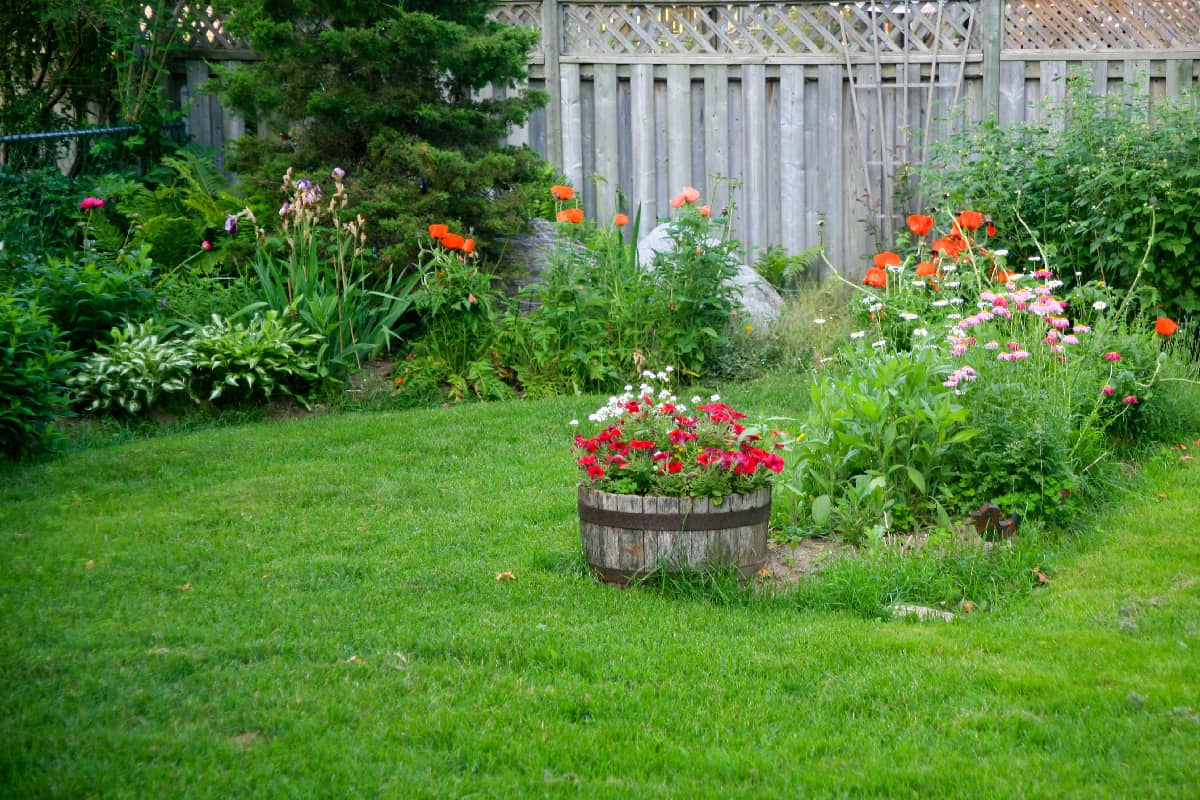
Grading issues happen when one side of your yard is higher than the other. This is normally easy to tell by just looking to see if your yard is sloped, but when in doubt, you can always use a tape measure. This causes water to pool in the low areas of your yard, creating a muddy mess.
Dogs
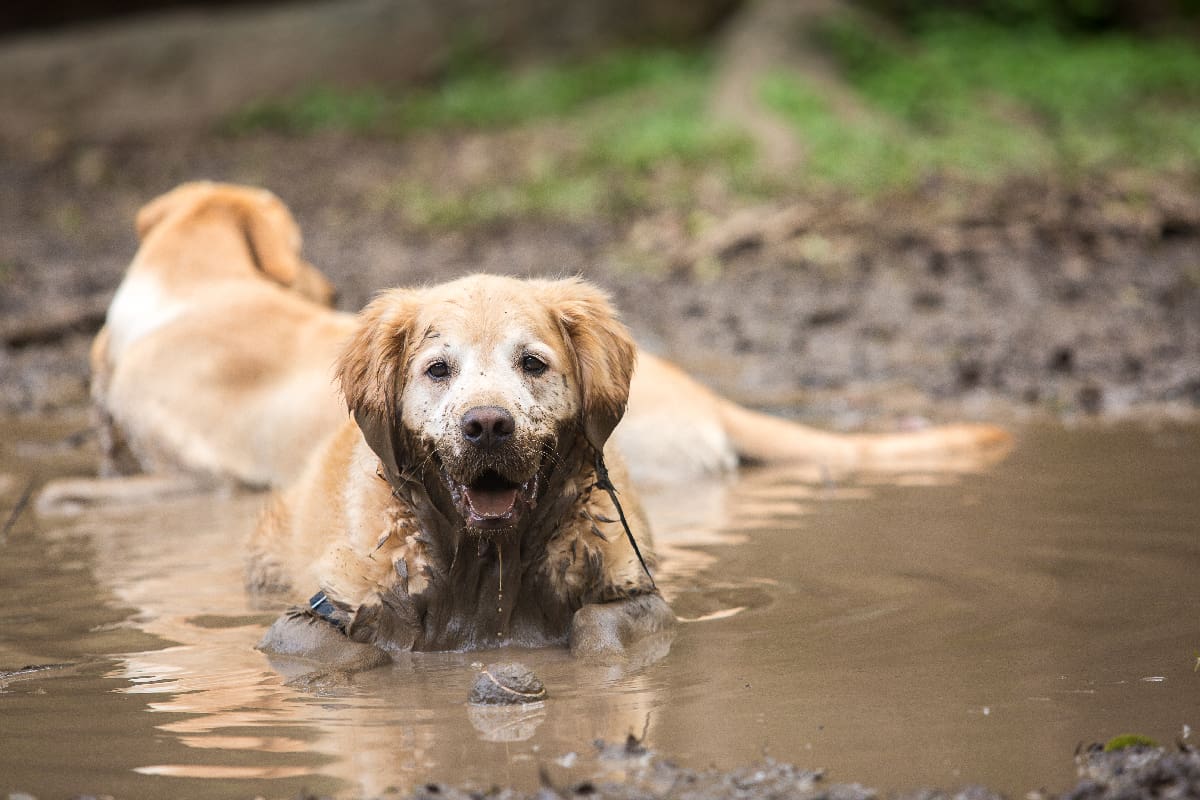
We all know that dogs are a man's best friend. However, they aren't easy on your grass or yard. Dogs like to create trails in your yard which causes the grass to die in that area. Dead grass is a recipe for muddy paws.
Pot Holes
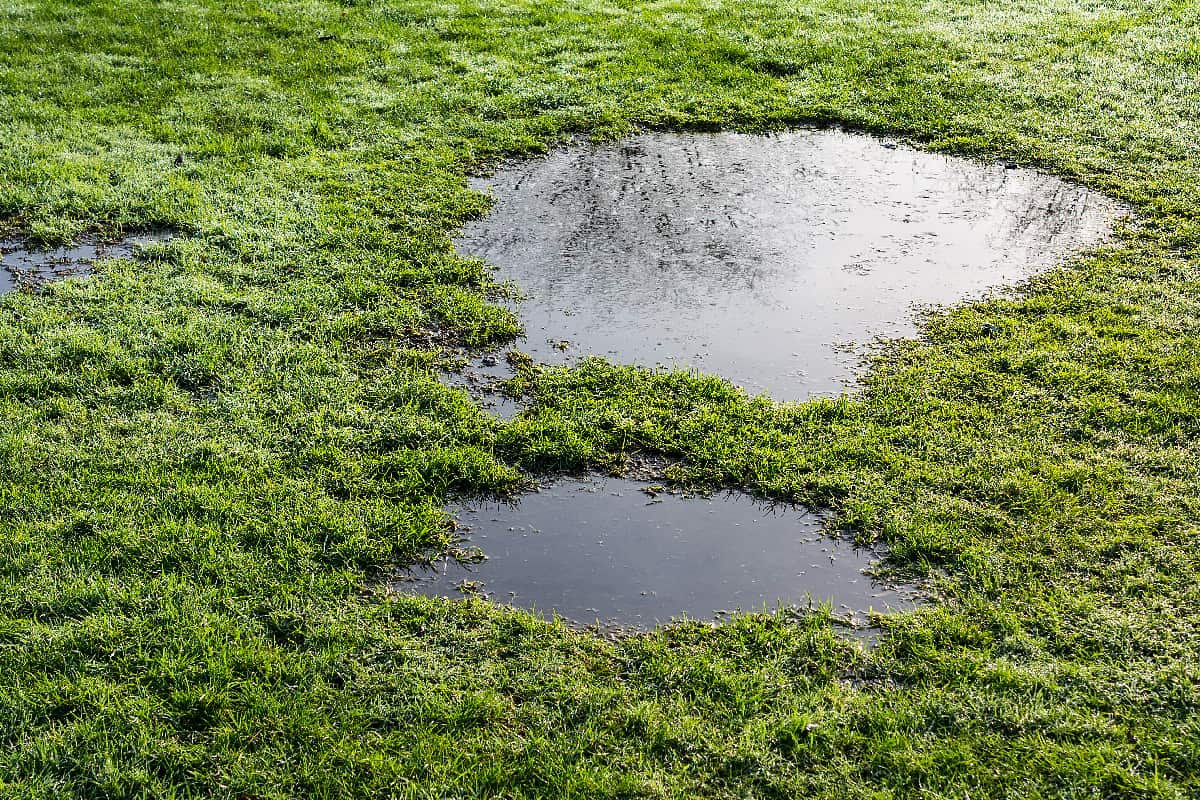
Just like potholes on streets and highways, potholes can happen in your yard as well. This will cause the water to collect in these holes and cause mud issues and a headache when mowing the lawn. Thankfully, there are easy ways to fix this!
Downspout Issues
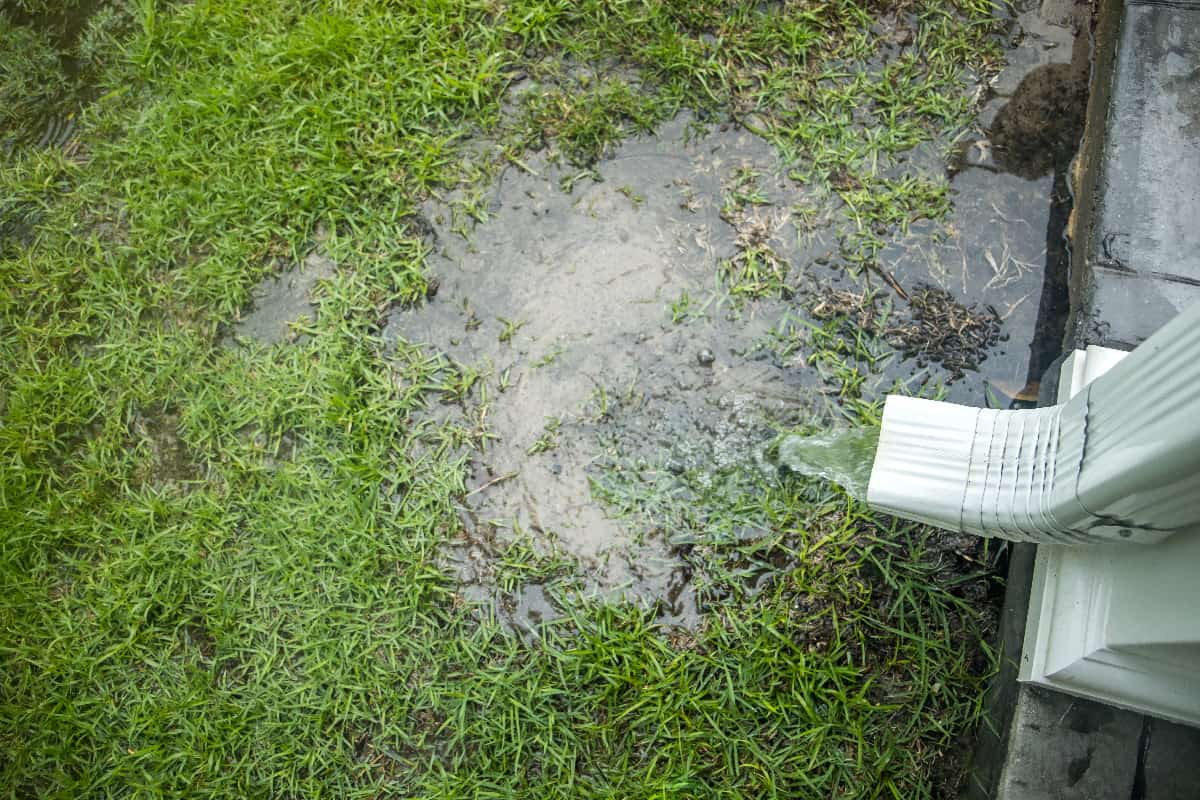
Gutter downspouts collect rain or water and flush it away from your home. In some cases, your downspouts can get clogged with debris and leaves. Or, they could be too short and not take the water far enough away from your house.
How To Fix A Muddy Yard
Now that you have identified why you have a muddy yard, let's fix it! We have temporary and permanent options to talk about. Here are all the great ways to stop the mud depending on your issue.
French Drain
French drains help to redirect the water away from your home. This option is especially helpful if you have poor drainage or grading that is sloped. You can do a DIY French drain by digging a trench. However, it is best to let the experts install a French drain to make sure it is done properly.
Mulch, Rock, Or Straw
The straw will soak up the water promptly but temporarily. This is great in a pinch if you need to soak up the puddles. If you have standing puddles of water, fill them with rock, mulch, or straw.
Click here to see this garden straw on Amazon.
Pavers
This is a great choice if you don't mind permanently killing your grass and installing pavers or concrete stones. You could make a dreamy pathway around your yard in the muddy spots. To put down pavers, make sure the ground is level, and put a layer of sand on the bottom to ensure it is level.
Trees Or Shrubs
Trees can add value to your property and elevate your landscaping. Plant a tree or shrub where water normally collects to ward off the sludge. This is a great option, but keep in mind it takes time for the tree to grow to full maturity. This is not considered a quick fix.
Extend Downspouts
Gutter downspouts are extremely important to keep water away from your home and prevent flooding. You might have an issue where your downspouts are doing their job but they aren't long enough to push the water away from your home.
Check your downspouts, and if they aren't long enough, you can easily buy extenders to make them longer.
Click here to see these downspout extenders on Amazon.
Rain Garden
Build a rain garden to embrace the mud! This serves a dual purpose to beautify your landscape and redirect the water. Select plants that naturally love water. Elephant ears, water hyssop, and cattail are all water-loving plants.
Will Grass Grow Back After Mud?

It is possible to grow grass in muddy areas, but it does take some prep work to dry out the yard first. It is challenging but not impossible!
How Do You Seed A Muddy Yard?
Once your mud issue is fixed, you might be wondering how to grow your grass back. Let's go over the steps on how to seed a muddy yard. We want to save your grass if possible!
Step 1
Remove any extra debris in the area like rocks, sticks, or weeds. Rail the topsoil until it's smooth and even.
Step 2
Put soil and sand on top of the mud to dry it out. The amount of sand you will need depends on how muddy your area is. Keep adding sand and tilling until you see the soil become hard and dry.
Step 3
Add compost to the top of the soil to encourage the grass seed to germinate. Rake until smooth. Tip—you can make your own compost for free from kitchen scraps.
Step 4
Spread the grass seed. To make sure it disperses the seed evenly, use a mechanical or hand spreader. Using the back of a rake, gently run it over the seed. Cover it with a small amount of mud on the top layer to keep the seeds intact.
Step 5
Water the yard thoroughly once or twice per day. Do this for 10 days. But make sure you aren't adding too much water and creating more of a mud problem.
What Kind Of Plants, Trees, And Shrubs Like Wet Soil?
It is helpful to know what kind of plants like wet soil when planting in soggy areas. The last thing you would want is to create a mold problem! Let's discuss the best kind of plants, trees, and shrubs to clear up your muddy issue.
Plants
Bleeding hearts are a lovely choice of flower for moist soil. This perennial is hardy in Zones 3 through 9. It loves partial shade to full shade and blooms pink and red flowers in the spring.
Trees
Red maple trees love damp soil. It is normally found in wet bottomlands or woods. Not only do they have gorgeous red leaves but they are also fast growing and easy to care for.
Shrubs
Spicebush is an aromatic shrub that everyone enjoys. They are low maintenance in nature, and their spicy fragrance make them a well-loved choice for many gardeners. It is normally grown around stream banks and wetlands.
Wrapping It Up
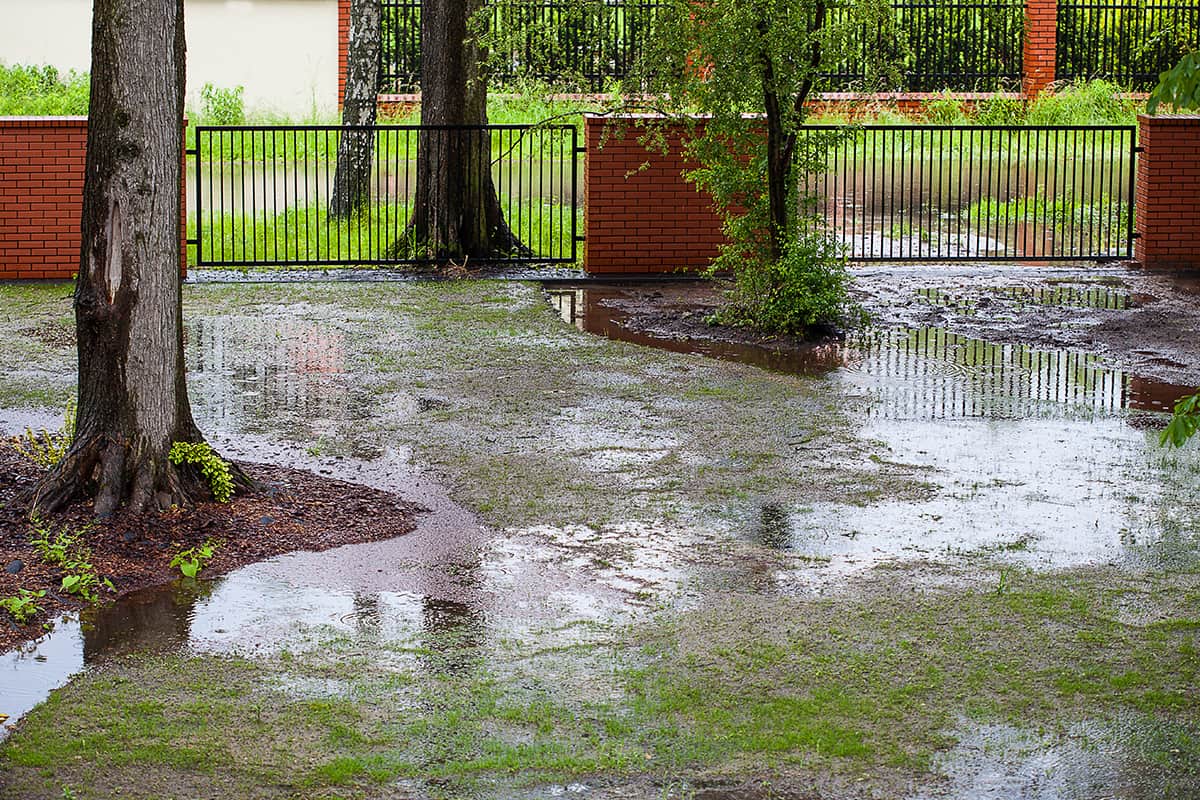
Let's be honest, having a muddy yard is no fun. Because most of the time that mud comes inside your home and ruins your cleaning job. We've discussed the reasons why your yard is muddy and how to fix it! From French drains to laying down mulch, we have you covered.
Made it to the end? Check out these related articles:
Does Sand Help Grass Grow? [Inc. Bermuda Grass]
How To Grow Grass In High Dog Traffic Areas
What Is Eating My Bleeding Heart Plant [And How To Prevent It]?


